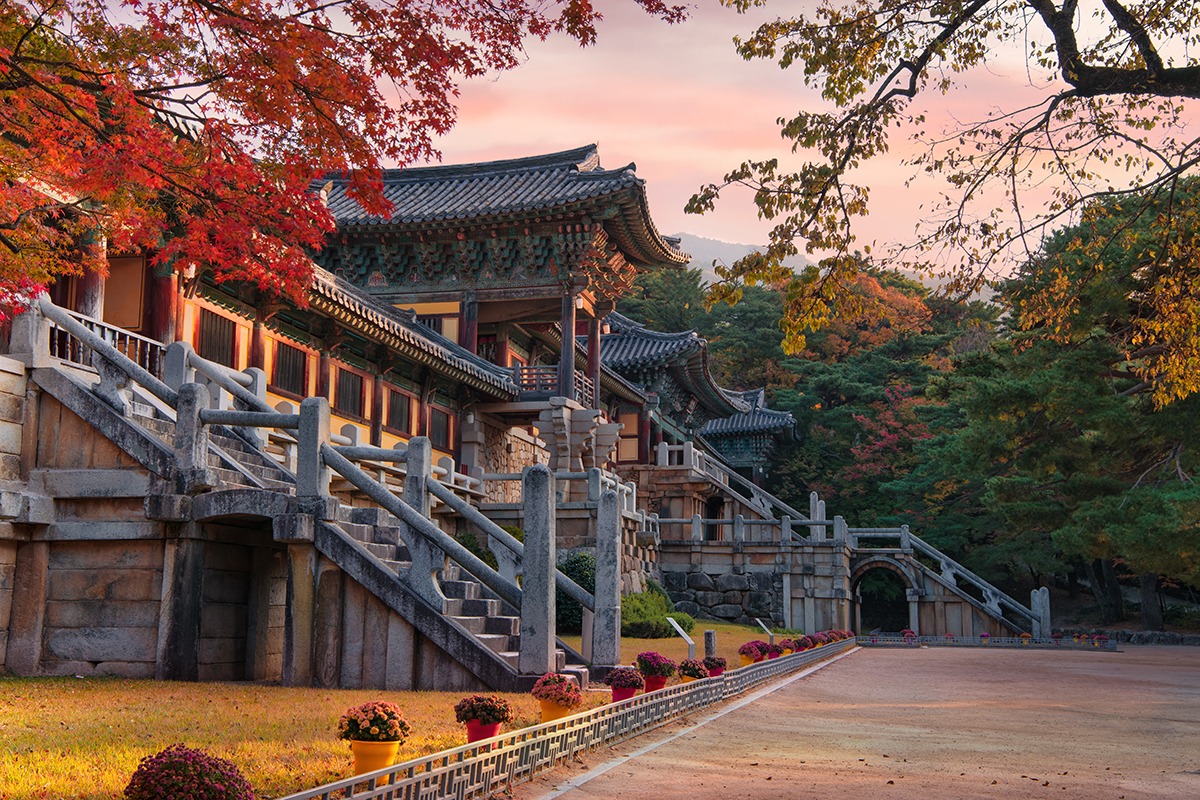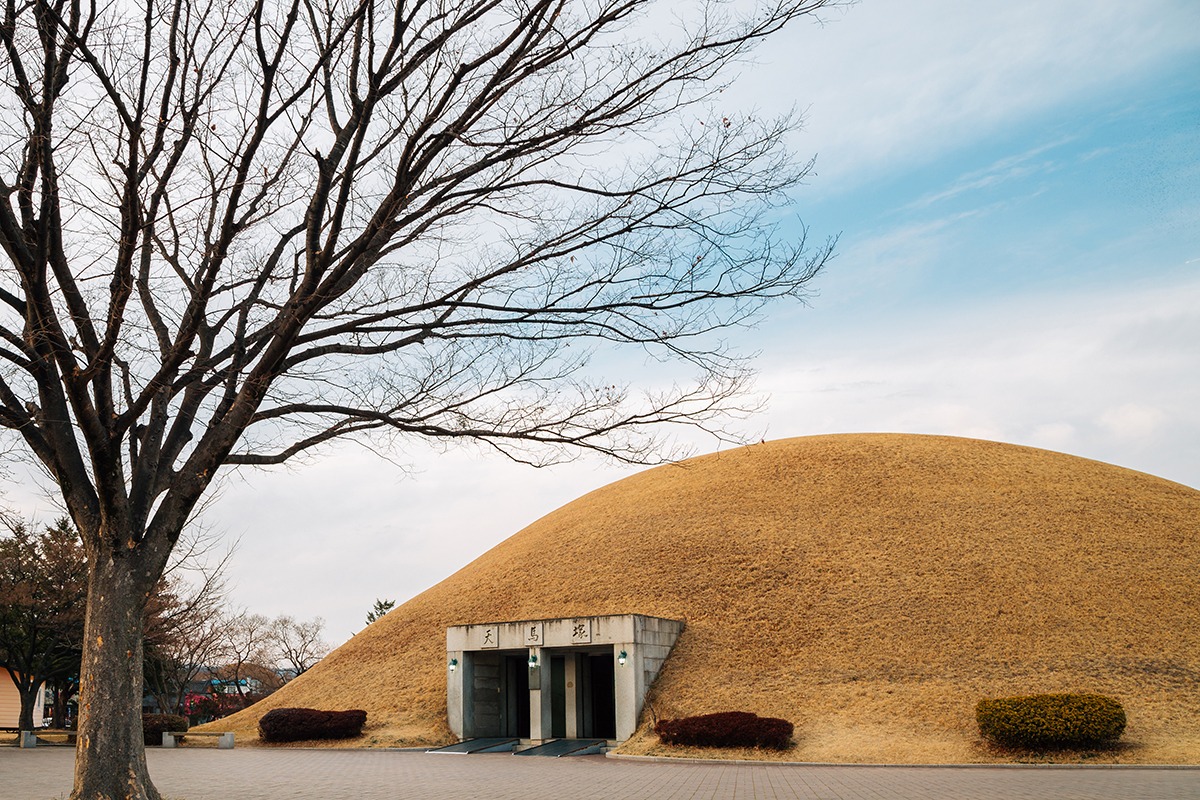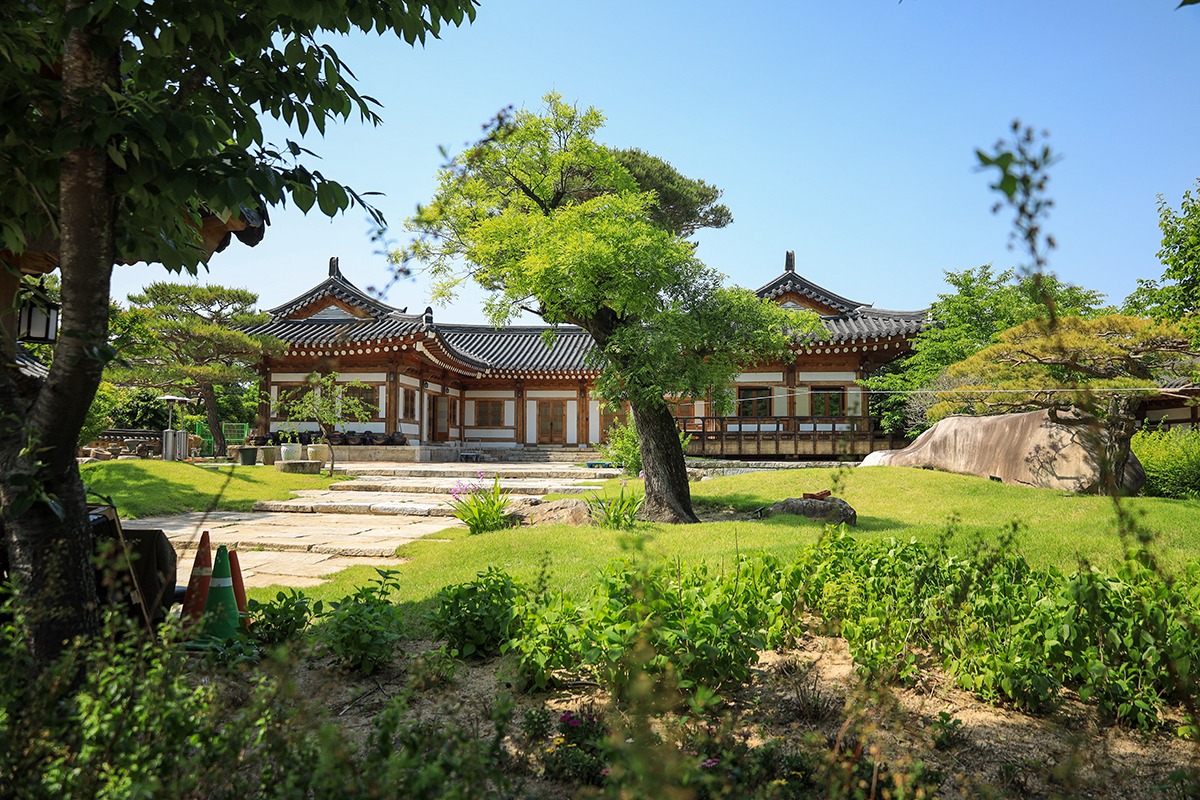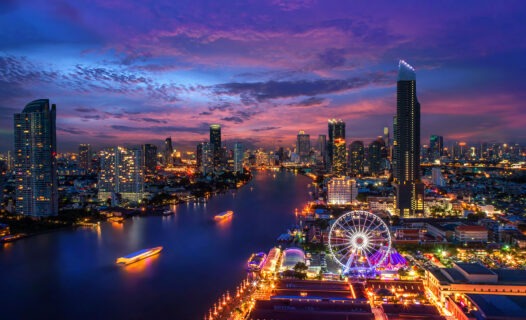Gyeongju-si, often known as the “museum without walls,” is an enchanting city brimming with historical treasures, ancient temples, and remarkable cultural experiences. Once the capital of the Silla Dynasty, Gyeongju offers visitors a glimpse into Korea’s rich past while seamlessly blending with modern attractions. Whether you’re a history buff, nature enthusiast, or foodie, Gyeongju has something for everyone. In this guide, we’ll explore the top things to do in Gyeongju-si, South Korea.
1. Explore Bulguksa Temple
One of Gyeongju’s most iconic sites, Bulguksa Temple is a masterpiece of Buddhist art and architecture. Built in the 8th century, the temple complex is a UNESCO World Heritage Site that showcases intricate carvings, stone pagodas, and tranquil gardens. Don’t miss the Dabotap and Seokgatap pagodas, which symbolize spiritual enlightenment and the universe.
2. Visit Seokguram Grotto
A short hike from Bulguksa Temple, the Seokguram Grotto houses an exquisite statue of Buddha, surrounded by intricately carved guardians. This hermitage and stone temple possess extraordinary artistry and craftsmanship. The grotto is particularly magical at sunrise, offering breathtaking views over the East Sea.
3. Discover the Royal Tombs at Tumuli Park
Tumuli Park, also known as Daereungwon Tomb Complex, is home to the royal tombs of the Silla kings and queens. Wander through the park’s grassy mounds and visit the Cheonmachong Tomb, where you can see exquisite artifacts on display. Each tomb tells a unique story of the Silla Dynasty’s rich history.
4. Marvel at Cheomseongdae Observatory
The Cheomseongdae Observatory, the oldest surviving astronomical observatory in Asia, offers a fascinating glimpse into ancient Korean science. Built in the 7th century, this 9.17-meter-tall stone structure was used to observe the stars and predict celestial events. Its unique design and historical significance make it a must-see attraction in Gyeongju.
5. Stroll around Anapji Pond
Anapji Pond, part of the Donggung Palace Complex, is a picturesque man-made pond constructed during the Silla Dynasty. It was used for royal banquets and as a leisure space. Today, visitors can enjoy a serene walk around the pond, especially captivating when the illuminated palace reflects off the water at night.
6. Cross the Beautiful Woljeonggyo Bridge
The Woljeonggyo Bridge is a stunning reconstruction of a Silla-era wooden bridge. Connecting Donggung Palace and Wolji Pond, the bridge offers panoramic views and is beautifully lit at night. It is a fantastic spot for photography and a romantic evening stroll.
7. Climb Namsan Mountain
Namsan Mountain, often referred to as the “sacred mountain” of Gyeongju, is home to hundreds of Buddha statues, pagodas, and temple ruins. Hiking trails lead visitors through lush landscapes to stunning viewpoints. Namsan is perfect for nature lovers and those seeking spiritual enrichment.
8. Explore Gyeongju National Museum
The Gyeongju National Museum houses an extensive collection of artifacts from the Silla Dynasty. From royal regalia and pottery to religious relics and ancient texts, the museum offers a deep dive into the region’s history and culture. Educational programs and exhibitions make it a fantastic visit for all ages.
9. Experience Traditional Life at Gyochon Hanok Village
Gyochon Hanok Village offers visitors a chance to step back in time and experience traditional Korean life. The village features well-preserved hanok houses, cultural workshops, and local cuisine. Try Gyeongju’s famous Hwangnam bread and participate in tea ceremonies and craft making.
10. Savor Local Delicacies
No trip to Gyeongju is complete without indulging in the local cuisine. Enjoy traditional dishes such as Gyeongju Ssambap (rice with vegetable wraps) and Hwangnam bread, a local pastry filled with sweet red bean paste. Visit the bustling markets and street vendors to savor the region’s flavors.
Whether you are exploring ancient temples, wandering through historical sites, or savoring local delicacies, Gyeongju-si offers an unforgettable journey through Korea’s rich cultural tapestry. Embrace the past and the present in this beautiful city, and create memories that will last a lifetime.
























